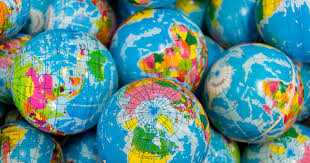Indian Geography Notes – On Driving Mechanism Of Monsoon – For W.B.C.S. Examination.
ভারতীয় ভূগোল নোট – মৌসুমি বায়ুর পদ্ধতি – WBCS পরীক্ষা।
Indian Monsoons
- The term monsoon has been derived from the Arabic word mausin or from the Malayan word monsin meaning ‘season’.Continue Reading Indian Geography Notes – On Driving Mechanism Of Monsoon – For W.B.C.S. Examination.
- Monsoons are seasonal winds (Rhythmic wind movements)(Periodic Winds) which reverse their direction with the change of season.
- The monsoon is a double system of seasonal winds – They flow from sea to land during the summer and from land to sea during winter.
- Some scholars tend to treat the monsoon winds as land and sea breeze on a large scale.
- Monsoons are peculiar to Indian Subcontinent, South East Asia, parts of Central Western Africa etc..
- They are more pronounced in the Indian Subcontinent compared to any other region.
- Indian Monsoons are Convection cells on a very large scale.
- They are periodic or secondary winds which seasonal reversal in wind direction.
- India receives south-west monsoon winds in summer and north-east monsoon winds in winter.
- South-west monsoons are formed due to intense low pressure system formed over the Tibetan plateau.
- North-east monsoons are associated with high pressure cells over Tibetan and Siberian plateaus.
- South-west monsoons bring intense rainfall to most of the regions in India and north-east monsoons bring rainfall to mainly south-eastern coast of India (Southern coast of Seemandhra and the coast of Tamil Nadu.).
- Countries like India, Indonesia, Bangladesh, Myanmar etc. receive most of the annual rainfall during south-west monsoon season where as South East China, Japan etc., during north-east rainfall season.
Factors responsible for south-west monsoon formation
- Intense heating of Tibetan plateau during summer months.
- Permanent high pressure cell in the South Indian Ocean (east to north-east of Madagascar in summer).
Factors that influence the onset of south-west monsoons
- Subtropical Jet Stream (STJ).
- Tropical Easterly Jet (African Easterly Jet).
- Inter Tropical Convergence Zone.
Factors that influence the intensity of south-west monsoons
- Strengths of Low pressure over Tibet and high pressure over southern Indian Ocean.
- Somali Jet (Findlater Jet).
- Somali Current (Findlater Current).
- Indian Ocean branch of Walker Cell.
- Indian Ocean Dipole.
Factors responsible for north-east monsoon formation
- Formation and strengthening of high pressure cells over Tibetan plateau and Siberian Plateau in winter.
- Westward migration and subsequent weakening of high pressure cell in the Southern Indian Ocean.
- Migration of ITCZ to the south of India.
Our own publications are available at our webstore (click here).
For Guidance of WBCS (Exe.) Etc. Preliminary , Main Exam and Interview, Study Mat, Mock Test, Guided by WBCS Gr A Officers , Online and Classroom, Call 9674493673, or mail us at – mailus@wbcsmadeeasy.in
Visit our you tube channel WBCSMadeEasy™ You tube Channel
Please subscribe here to get all future updates on this post/page/category/website



 +919674493673
+919674493673  mailus@wbcsmadeeasy.in
mailus@wbcsmadeeasy.in






































































































